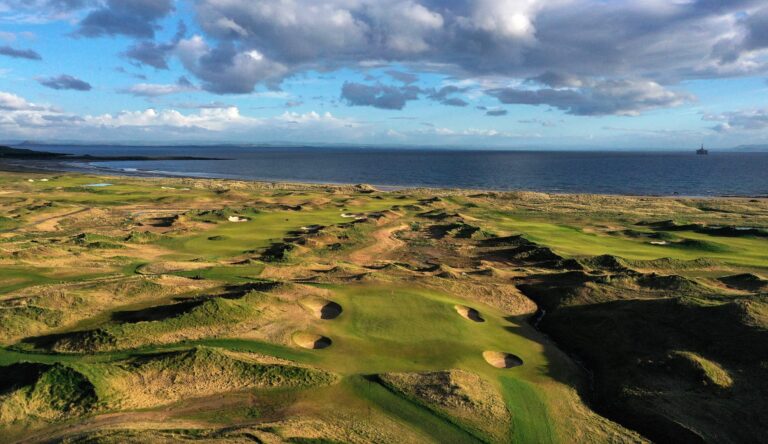Golf has a rich history and tradition that can be fascinating for both newcomers and seasoned players. One term that often comes up is “links,” which might leave you wondering what it means.
Simply put, “links” refers to the coastal landscapes where golf got its start. These courses usually have sandy soil, natural hills, and few trees. But to really get why golf courses are called links, it’s worth exploring the history, features, and evolution of these special spots.
Going back to Scotland: the birthplace of golf

Golf is widely believed to have originated in Scotland during the Middle Ages. The first documented mention of golf dates back to 1457 when King James II banned the game because it was distracting soldiers from their archery practice. This royal ban highlights how widespread and popular the game had become, even in its early days.
The game was played on the coastal dunes of Scotland, known as “Linksland.” These coastal areas provided the perfect natural setting for the game, with their undulating terrain and challenging conditions. The connection between golf and the Scottish landscape is so strong that many golfers make pilgrimages to Scotland to experience the game in its purest form.
What is Linksland?
“Linksland” refers to the coastal terrain characterized by sandy soil, natural grasses, and dunes. This type of land was unsuitable for farming but perfect for playing golf. The word “links” comes from the Old English word “line,” meaning a ridge or rising ground.
The unique properties of Linksland, such as its ability to drain quickly and provide firm playing surfaces, made it ideal for golf.
Characteristics of links courses
Links courses are a whole different ballgame compared to your typical parkland courses.
- They stick to the natural terrain, so instead of manicured fairways, you get rolling hills, deep bunkers, and some pretty uneven lies.
- Every round feels different, and you really have to adapt your game to whatever the course throws at you.
- There are no artificial features here, so it’s all about nailing those shots and thinking strategically.
- One of the coolest things about links courses is their sandy soil. This soil drains super quickly, so you can play year-round, even when it’s wet out.
- The firm ground means the ball runs and rolls a lot more than on softer courses, changing how you approach your shots.
- Low, running shots often work better than high, lofted ones.
- Even after a heavy rain, these courses are usually still playable, which isn’t always the case with other types.
Modern links courses
While links golf courses started in Scotland, they’ve made their way around the world. Now, you can find them in Ireland, England, and even the United States. Take Royal County Down in Northern Ireland or Pebble Beach in California, for example.
These days, people sometimes use “links” to describe any golf course with similar features, even if it’s not on coastal land. But true links courses are still special in the golfing world. They’re celebrated for their connection to the game’s origins and the unique playing experience they offer.
Often seen as the peak of golf course design, these courses provide a pure, challenging experience that’s deeply rooted in tradition. They’re also frequently chosen for major championships, showing just how revered they are.
Check out also our article on Can You Drive a Golf Cart without a License?
How these courses affect your game

Playing links golf is a whole different ball game compared to other types of courses. You have to think about the wind, the hard ground, and natural hazards. Links courses test every part of your game, from your shot-making skills to your mental toughness.
You’ll find yourself planning several shots ahead, figuring out how to handle the course’s unique layout and the ever-changing conditions.
Be ready for a tough game
Links courses are known for their difficulty, and they can be physically and mentally exhausting. This difficulty is part of the appeal for many players.
Success on a links course requires a high level of skill, concentration, and mental strength. Playing on these courses forces you to develop new strategies and techniques, which can improve your overall game.
In summary
These courses are unique, with their natural landscape, sandy soil, and few trees, offering tough playing conditions. The term “links” doesn’t just describe a type of golf course – it captures the very essence of golf itself: challenging, strategic, and steeped in history.

